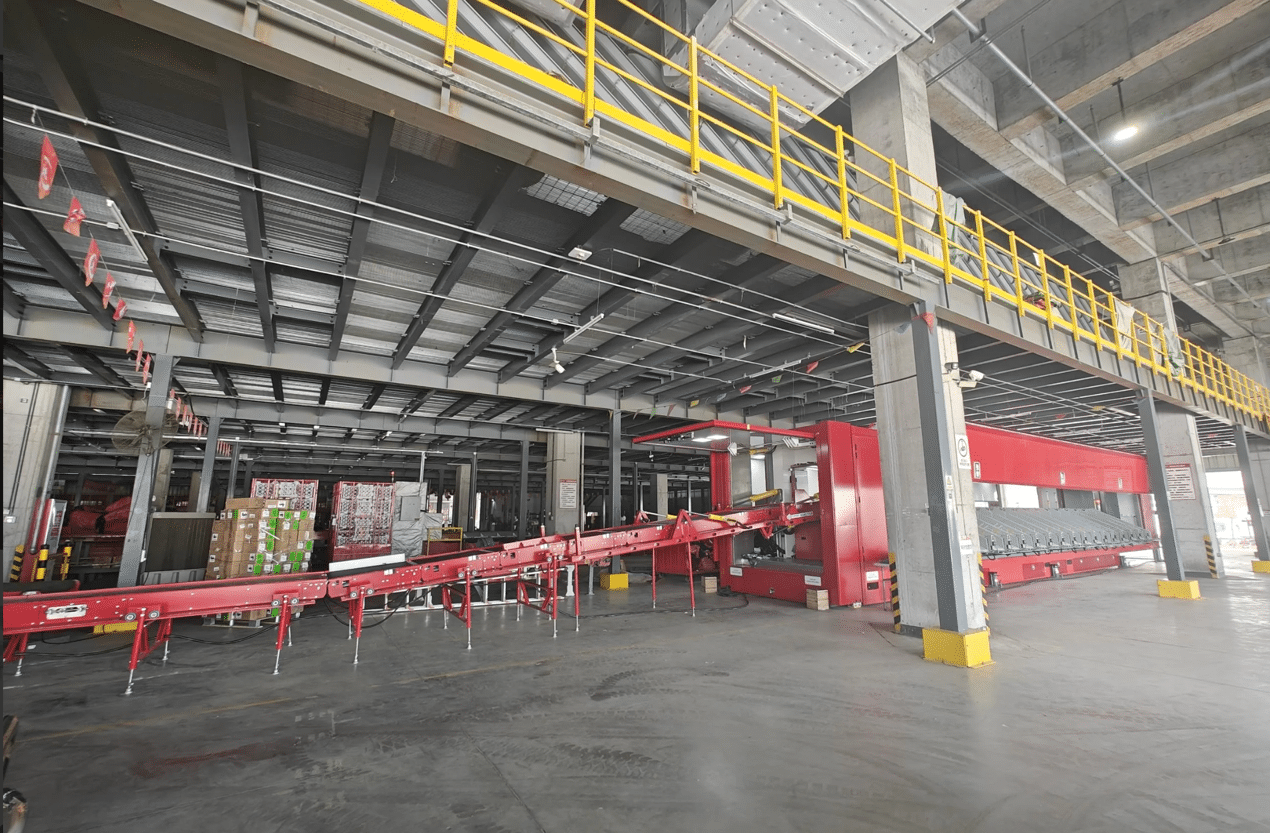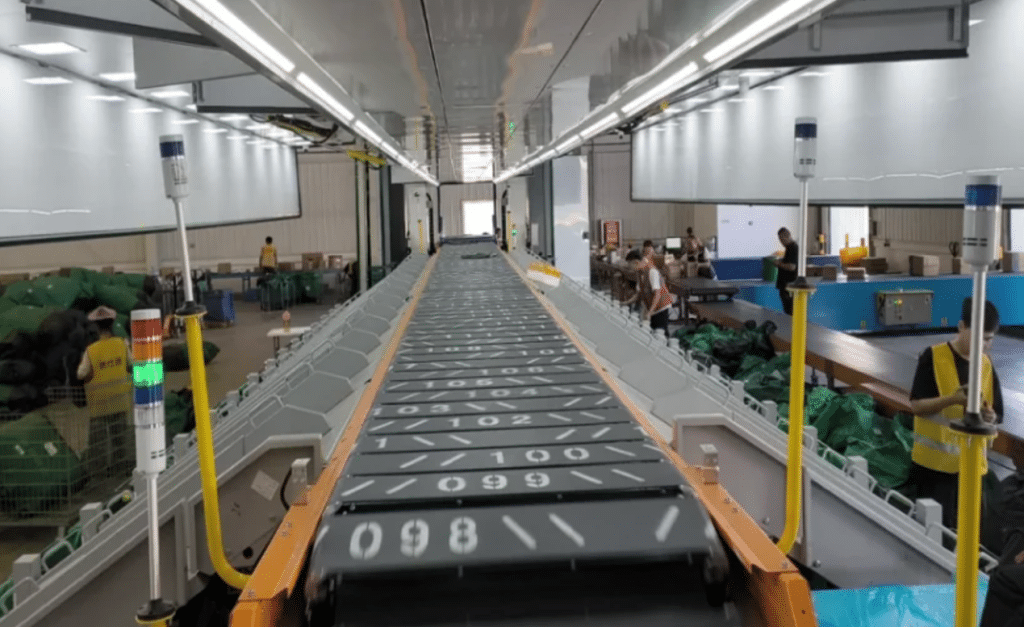The annual peak season is not a surprise, yet it consistently triggers a crisis in retail logistics. This failure is systemic, rooted in a fundamental mismatch: we apply static, factory-floor models to a fluid, dynamic demand surge. The prevailing response—investing in larger, fixed automation—misses the point. When order volumes multiply, the efficiency of a rigid system doesn’t just decrease; it collapses under the weight of its own inflexibility.
The core problem is not a lack of capacity, but a lack of asset elasticity. This analysis will examine the consequences of this rigidity for key stakeholders and posit that the solution lies not in bigger infrastructure, but in a new class of tactical, on-demand automation. A prime example of this approach is the mobile sorting unit, designed specifically for such temporary, high-volume missions.
1. For the Operations Manager: The Fallacy of Linear Scaling
On the warehouse floor, the peak season plan often boils down to adding temporary labor. This assumes that adding 200% more people will yield something approaching 200% more output. It’s a fallacy. In reality, you’ve introduced 200% more bodies into a physical space and a process flow designed for a fraction of that load.
The immediate consequence is a catastrophic drop in process integrity. Staging areas become impassable, queueing times at packing stations skyrocket, and sorting accuracy plummets as undertrained staff work in congested conditions. We’re not just adding hands; we’re adding chaos. The core operational challenge is not a lack of manpower, but a severe bottleneck in processing capacity. The logical engineering solution is to create temporary, parallel processing lanes to handle the overflow, without disrupting the primary workflow. This requires a system that can be deployed and calibrated in days, not months, and then completely removed, leaving no permanent footprint.
2. For the Brand Director: The Black Box of Third-Party Fulfillment
For brand leadership, peak season is the ultimate test of customer promise. However, by outsourcing to a 3PL, they are effectively placing their brand reputation inside a black box. During the holiday surge, that black box is under extreme duress.
The brand loses all granular control and visibility. Their fulfillment priority is determined by the 3PL’s overwhelmed internal triage, not by their own strategic needs. From a risk management perspective, this represents an unacceptable vulnerability at the most critical revenue period of the year. The core issue is the brand’s inability to influence a critical node in their own supply chain. The strategic remedy is to deploy a dedicated, brand-controlled asset at the point of friction. This asset must be mobile enough to be co-located at a 3PL facility or a temporary site, flexible enough to integrate with their order flow, and available on a short-term basis.
3. For the CFO/Decision-Maker: The Inefficiency of Peak-Capacity Capital
From a financial standpoint, investing in fixed automation sized to handle the absolute highest peak is a fundamentally inefficient use of capital. If a sorting system’s full capacity is only required for 30-45 days a year, the asset utilization rate for that peak-capacity portion is devastatingly low. It is, in essence, paying 12 months of capital cost for 1 month of utility.
A more sophisticated financial model seeks to align expenses with revenue streams. This means shifting the cost of peak capacity from a fixed capital expenditure (CAPEX) to a variable operating expenditure (OPEX). This requires a new category of physical assets: reusable, modular systems that can be leased for the required duration. This approach transforms the cost of peak fulfillment from a speculative, long-term investment into a predictable, short-term operational cost that directly corresponds to the revenue it helps generate. It is, simply, a more rational allocation of capital.

4. For the SMB Owner: Breaking the Operational Ceiling
For a growing small or medium-sized business, peak season exposes the “operational ceiling”—the absolute physical limit of orders they can process manually. Exceeding this limit means fulfillment failure. Staying below it means sacrificing what is often the single greatest growth opportunity of the year.
The challenge is not a lack of ambition but a lack of access to scalable tools. A large capital investment in automation is out of the question, creating a permanent barrier to entry into the next tier of competition. The solution cannot be a scaled-down version of a large, permanent system. It must be an entirely different model: an on-demand system that allows the SMB to temporarily raise its operational ceiling. The ability to lease a compact, automated sorting system for a single month provides a mechanism to safely absorb the peak, capture the revenue, and fund the next stage of growth.
An Engineering Philosophy for Elasticity
The challenges above cannot be solved by simply making traditional systems bigger. They require a different type of tool, born from a different engineering philosophy. Where permanent systems are designed for endurance and stability, a solution for peak demand must be designed for tactical deployment and rapid response.
This is the principle behind the Siwun Mobile Sorting Unit. It was not conceived as a replacement for a warehouse’s primary systems, but as an elastic, external module to be deployed during periods of extraordinary stress. Its design, therefore, is not a compromise but a focused optimization around the metrics that matter in this context:
- Time-to-Utility: Minimizing the period from delivery to operational readiness.
- Process Density: Achieving the highest possible throughput per square meter.
- Modularity: Ensuring the system can be configured to the specific task, not the other way around.
- Zero Footprint Post-Mission: The ability to be completely removed, returning the space to its primary function.
This approach allows an operation to maintain a lean, efficient baseline for the majority of the year, while having a credible, tested strategy for absorbing the predictable, seasonal surge.
Is your peak season strategy based on hope, or on engineering? Contact Siwun to model your peak flow and identify your primary bottlenecks.

